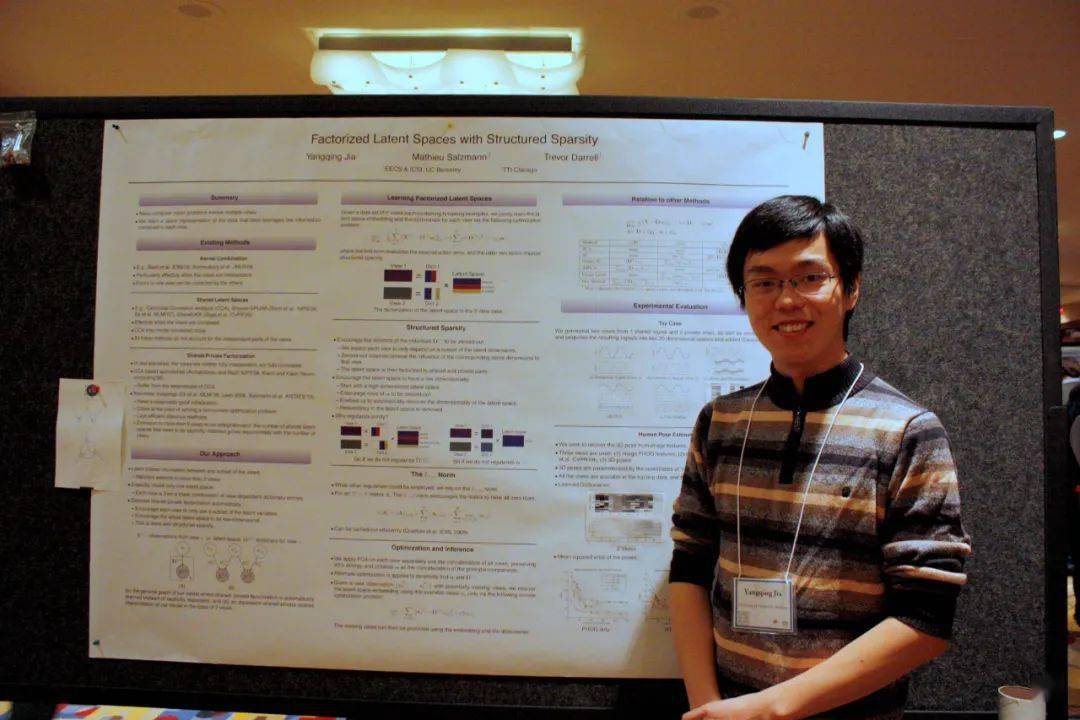Spring-retry详解
什么是重试
重试是指,当在一个程序运行过程中,突然遇到了例如网络延迟,中断等情况时,为了保证程序容错性,可用性,一致性等的一个措施,目前主流的框架大多都有一套自己的重试机制,例如 dubbo,mq,Spring 等
概要
Spring 也自己实现了一套重试机制,Spring Retry 是从 Spring batch 中独立出来的一个功能,主要功能点在于重试和熔断,目前已经广泛应用于 Spring Batch,Spring Integration, Spring for Apache Hadoop 等 Spring 项目。spring retry 提供了注解和编程 两种支持,提供了 RetryTemplate 支持,类似 RestTemplate。整个流程如下:

使用介绍
Maven 依赖
<dependency>
<groupId>org.springframework.retry</groupId>
<artifactId>spring-retry</artifactId>
</dependency>
<!-- also need to add Spring AOP into our project-->
<dependency>
<groupId>org.springframework</groupId>
<artifactId>spring-aspects</artifactId>
</dependency>
注解使用
开启 Retry 功能,需在启动类中使用 @EnableRetry 注解
@SpringBootApplication
@EnableRetry
@EnableScheduling
public class DemoApplication {
public static void main(String[] args) {
SpringApplication.run(DemoApplication.class, args);
}
}
注解 @Retryable
需要在重试的代码中加入重试注解 @Retryable
@Retryable(value = RuntimeException.class)
public void testRetry01() throws MyException {
System.out.println("测试-value属性");
throw new RuntimeException("出现了异常");
}
默认情况下,会重试 3 次,间隔 1 秒
重试配置
通过 @Retryable 注解的属性 可以实现重试配置
- Value()
- includevalue 与 include 含义相同,表示可重试的异常类型。默认为空,如果同时 exclude 也为空则会重试所有异常。但在使用时需要注意
@Retryable(value = RuntimeException.class)
public void testRetry01() throws MyException {
System.out.println("测试-value属性");
throw new RuntimeException("出现了异常");
}
例:testRetry01 只会在程序抛出 RuntimeException 时,开启重试
- exclude不可重试的异常类型。默认为空(如果 include 也为为空,将重试所有异常)。如果 include 为空但 exclude 不为空,则重试非 exclude 中的异常 @Retryable(exclude = RuntimeException.class)
public void testRetry02() throws MyException {
System.out.println("测试-value属性");
throw new MyException("出现了异常");
}例:testRetry02 在程序抛出 MyException 时,不会开启重试 - maxAttempts
最大重试次数,默认为 3
- maxAttemptsExpression
最大尝试次数的表达式,表达式一旦设置了值,则会覆盖 maxAttempts 的值,maxAttemptsExpression 可以读取 application.yml 配置文件里的数据,也可以通过 SpEL 表达式计算对应的值
@Retryable(value = MyException.class, maxAttemptsExpression = "${maxAttempts}")
public void testRetry03() throws MyException {
System.out.println("测试-maxAttemptsExpression属性");
throw new MyException("出现了异常");
}

例:testRetry03 会去读 properties 配置文件获取属性名为 maxAttempts 的值
@Retryable(value = MyException.class, maxAttemptsExpression = "#{2+3}")
public void testRetry04() throws MyException {
System.out.println("测试-maxAttemptsExpression属性");
throw new MyException("出现了异常");
}
例:testRetry04 会去通过 SqlEL 计算出对应的重试值
- exceptionExpression
异常处理表达式,ExpressionRetryPolicy 中使用,执行完父类的 canRetry 之后,需要校验 exceptionExpression 的值,为 true 则可以重试
@Retryable(value = MyException.class, exceptionExpression = "#{@retryService.isRetry()}")
public void testRetry05() throws MyException {
System.out.println("测试-exceptionExpression");
throw new MyException("出现了异常");
}
例:这个表达式的意思就是,如果 testRetry05 方法出现异常 会调用 retryService.isRetry() 方法,根据返回结果判断是否重试
- @Recover兜底方法
当 @Retryable 方法重试失败之后,最后就会调用 @Recover 方法。用于 @Retryable 失败时的“兜底”处理方法。 @Recover 的方法必须要与 @Retryable 注解的方法保持一致,第一入参为要重试的异常,其他参数与 @Retryable 保持一致,返回值也要一样,否则无法执行!
@Retryable(value = MyException.class)
public void testRetry06() throws MyException {
System.out.println("测试兜底方法");
throw new MyException("出现了异常");
}
@Recover
public void recover06(MyException e) {
System.out.println("兜底方法开启,异常信息:" + e.getMessage());
}
熔断模式@CircuitBreaker
指在具体的重试机制下失败后打开断路器,过了一段时间,断路器进入半开状态,允许一个进入重试,若失败再次进入断路器,成功则关闭断路器,注解为 @CircuitBreaker ,具体包括熔断打开时间、重置过期时间
@CircuitBreaker(openTimeout = 1000, resetTimeout = 3000, value = MyException.class)
public void testRetry07() throws MyException {
System.out.println("测试CircuitBreaker注解");
throw new MyException("出现了异常");
}
例:openTimeout 时间范围内失败 maxAttempts 次数后,熔断打开 resetTimeout 时长 这个方法的意思就是方法在一秒内失败三次时,触发熔断,下次在有请求过来时,直接进入
重试策略
- SimpleRetryPolicy 默认最多重试 3 次
- TimeoutRetryPolicy 默认在 1 秒内失败都会重试
- ExpressionRetryPolicy 符合表达式就会重试
- CircuitBreakerRetryPolicy 增加了熔断的机制,如果不在熔断状态,则允许重试
- CompositeRetryPolicy 可以组合多个重试策略
- NeverRetryPolicy 从不重试(也是一种重试策略哈)
- AlwaysRetryPolicy 总是重试
退避策略
退避策略退避是指怎么去做下一次的重试,在这里其实就是等待多长时间。
通过 @Backoff 注解实现,那么我们首先看一下@Backoff 的参数
@Backoff 参数
- value
默认为 1000, 与 delay 作用相同,表示延迟的毫秒数。当 delay 非 0 时,此参数忽略。
- delay
默认为 0。在指数情况下用作初始值,在统一情况下用作*的最小值。当此元素的值为 0 时,将采用元素 value 的值,否则将采用此元素的值,并且将忽略 value。
- maxDelay
默认为 0。重试之间的最大等待时间(以毫秒为单位)。如果小于 delay,那么将应用默认值为 30000L
- multipler
默认为 0。如果为正,则用作乘法器以生成下一个退避延迟。返回一个乘法器,用于计算下一个退避延迟
- delayExpression
评估标准退避期的表达式。在指数情况下用作初始值*,在均匀情况下用作最小值。覆盖 delay。
- maxDelayExpression
该表达式计算重试之间的最大等待时间(以毫秒为单位)。 如果小于 delay,那么将应用 30000L 为默认值。覆盖 maxDelay。
- multiplierExpression
评估为用作乘数的值,以生成退避的下一个延迟。覆盖 multiplier。 返回一个乘数表达式,用于计算下一个退避延迟
- random
默认为 false,在指数情况下 multiplier> 0 将此值设置为 true 可以使后退延迟随机化,从而使最大延迟乘以前一延迟,并且两个值之间的分布是均匀的。
@Retryable(value = MyException.class, maxAttempts = 4,
backoff = @Backoff(delay = 2000, multiplier = 2, maxDelay = 5000))
public void testRetry08() throws MyException {
System.out.println("测试-backoff属性");
throw new MyException("出现了异常");
}
@Backoff 的参数会影响我们使用哪种退避策略
- FixedBackOffPolicy
默认退避策略,每 1 秒重试 1 次
- ExponentialBackOffPolicy
指数退避策略,当设置 multiplier 时使用,每次重试时间间隔为 当前延迟时间 * multiplier。
例如:默认初始 0.1 秒,系数是 2,那么下次延迟 0.2 秒,再下次就是延迟 0.4 秒,如此类推,最大 30 秒。
- ExponentialRandomBackOffPolicy
指数随机退避策略。在指数退避策略的基础上增加了随机性。
- UniformRandomBackOffPolicy
均匀随机策略,设置 maxDely 但没有设置 multiplier 时使用,重试间隔会在 maxDelay 和 delay 间随机
原理
切入点
@EnableRetry
@Target(ElementType.TYPE)
@Retention(RetentionPolicy.RUNTIME)
@EnableAspectJAutoProxy(proxyTargetClass = false)
@Import(RetryConfiguration.class)
@Documented
public @interface EnableRetry {
/**
* Indicate whether subclass-based (CGLIB) proxies are to be created as opposed to
* standard JAVA interface-based proxies. The default is {@code false}.
* @return whether to proxy or not to proxy the class
*/
boolean proxyTargetClass() default false;
}
@EnablRetry 中使用了两个特殊的注解
- @EnableAspectJAutoProxy
这个注解的作用是开启 aop 的功能,默认使用 jdk 的动态代理。如果 proxyTargetClass 参数为 true,则使用 cglib 的动态代理。
- @Import
Import 引入了 RetryConfiguration 的 bean 。我们重点看下这个 bean。
@Role(BeanDefinition.ROLE_INFRASTRUCTURE)
@Component
public class RetryConfiguration extends AbstractPointcutAdvisor
implements IntroductionAdvisor, BeanFactoryAware, InitializingBean {
private Advice advice;
private Pointcut pointcut;
我们可以看到 RetryConfiguration 继承了 AbstractPointcutAdvisor,所以 RetryConfiguration 需要实现 getAdvice() 和 getPointcut() 接口,所以这个 bean 的作用就是为 @Retryable 注解注册 pointcut 切点和 advice 增强。我们再来看他的 初始化方法
@Override
public void afterPropertiesSet() throws Exception {
this.retryContextCache = findBean(RetryContextCache.class);
this.methodArgumentsKeyGenerator = findBean(MethodArgumentsKeyGenerator.class);
this.newMethodArgumentsIdentifier = findBean(NewMethodArgumentsIdentifier.class);
this.retryListeners = findBeans(RetryListener.class);
this.sleeper = findBean(Sleeper.class);
Set<Class<? extends Annotation>> retryableAnnotationTypes = new LinkedHashSet<Class<? extends Annotation>>(1);
retryableAnnotationTypes.add(Retryable.class);
this.pointcut = buildPointcut(retryableAnnotationTypes); //创建 pointcut
this.advice = buildAdvice(); //创建 advice
if (this.advice instanceof BeanFactoryAware) {
((BeanFactoryAware) this.advice).setBeanFactory(this.beanFactory);
}
}
protected Advice buildAdvice() {
AnnotationAwareRetryOperationsInterceptor interceptor = new AnnotationAwareRetryOperationsInterceptor();
if (this.retryContextCache != null) {
interceptor.setRetryContextCache(this.retryContextCache);
}
if (this.retryListeners != null) {
interceptor.setListeners(this.retryListeners);
}
if (this.methodArgumentsKeyGenerator != null) {
interceptor.setKeyGenerator(this.methodArgumentsKeyGenerator);
}
if (this.newMethodArgumentsIdentifier != null) {
interceptor.setNewItemIdentifier(this.newMethodArgumentsIdentifier);
}
if (this.sleeper != null) {
interceptor.setSleeper(this.sleeper);
}
return interceptor;
}
上面代码用到了 AnnotationClassOrMethodPointcut,其实它最终还是用到了 AnnotationMethodMatcher 来根据注解进行切入点的过滤。这里就是 @Retryable 注解了
下面来看 AnnotationAwareRetryOperationsInterceptor 的 invoke() 方法
@Override
public Object invoke(MethodInvocation invocation) throws Throwable {
//获取真正的代理类
MethodInterceptor delegate = getDelegate(invocation.getThis(), invocation.getMethod());
if (delegate != null) {
//代理类存在,则执行代理类的 invoke()方法
return delegate.invoke(invocation);
}
else {
//否则,直接执行目标方法
return invocation.proceed();
}
}
这里 getDelegate() 会处理 @Retryable 的相关参数以及决定使用哪种重试策略和退避策略。
private MethodInterceptor getDelegate(Object target, Method method) {
ConcurrentMap<Method, MethodInterceptor> cachedMethods = this.delegates.get(target);
if (cachedMethods == null) {
cachedMethods = new ConcurrentHashMap<Method, MethodInterceptor>();
}
MethodInterceptor delegate = cachedMethods.get(method);
if (delegate == null) {
//获取方法上的 Retryable 注解
MethodInterceptor interceptor = NULL_INTERCEPTOR;
Retryable retryable = AnnotatedElementUtils.findMergedAnnotation(method, Retryable.class);
if (retryable == null) {
//获取类上的 Retryable 注解
retryable = AnnotatedElementUtils.findMergedAnnotation(method.getDeclaringClass(), Retryable.class);
}
if (retryable == null) {
//获取目标类或者方法上的 Retryable 注解
retryable = findAnnotationOnTarget(target, method, Retryable.class);
}
if (retryable != null) {
if (StringUtils.hasText(retryable.interceptor())) {
//是否实现了自定义拦截,优先级最高
interceptor = this.beanFactory.getBean(retryable.interceptor(), MethodInterceptor.class);
}
else if (retryable.stateful()) {
//有状态的拦截
interceptor = getStatefulInterceptor(target, method, retryable);
}
else {
//无状态的拦截
interceptor = getStatelessInterceptor(target, method, retryable);
}
}
cachedMethods.putIfAbsent(method, interceptor);
delegate = cachedMethods.get(method);
}
this.delegates.putIfAbsent(target, cachedMethods);
return delegate == NULL_INTERCEPTOR ? null : delegate;
}
该方法会返回 @Retryable 最终使用的处理类,我们重点看一下 getStatelessInterceptor 的处理,getStatefulInterceptor 中多了 @CircuitBreaker 熔断相关的处理。
private MethodInterceptor getStatelessInterceptor(Object target, Method method, Retryable retryable) {
//生成 RetryTemplate,同时主持 listener
RetryTemplate template = createTemplate(retryable.listeners());
//设置重试策略
template.setRetryPolicy(getRetryPolicy(retryable));
//设置退避策略
template.setBackOffPolicy(getBackoffPolicy(retryable.backoff()));
//通过 StatelessRetryInterceptorBuilder 创建 RetryOperationsInterceptor 拦截,初始化重试模板等信息
return RetryInterceptorBuilder.stateless().retryOperations(template).label(retryable.label())
.recoverer(getRecoverer(target, method)).build();
}
在回头看看 getStatefulInterceptor 方法
private MethodInterceptor getStatefulInterceptor(Object target, Method method, Retryable retryable) {
RetryTemplate template = createTemplate(retryable.listeners());
template.setRetryContextCache(this.retryContextCache);
//获取方法上的 CircuitBreaker 注解
CircuitBreaker circuit = AnnotatedElementUtils.findMergedAnnotation(method, CircuitBreaker.class);
if (circuit == null) {
//如果熔断参数不为空,则处理相关参数,返回响应的拦截处理方,如果为空 ,则处理非熔断的有状态重试
circuit = findAnnotationOnTarget(target, method, CircuitBreaker.class);
}
if (circuit != null) {
//处理 CircuitBreaker 注解中的 retryable 相关参数,获得重试策略
RetryPolicy policy = getRetryPolicy(circuit);
CircuitBreakerRetryPolicy breaker = new CircuitBreakerRetryPolicy(policy);
breaker.setOpenTimeout(getOpenTimeout(circuit));
breaker.setResetTimeout(getResetTimeout(circuit));
template.setRetryPolicy(breaker);
template.setBackOffPolicy(new NoBackOffPolicy());
String label = circuit.label();
if (!StringUtils.hasText(label)) {
label = method.toGenericString();
}
return RetryInterceptorBuilder.circuitBreaker().keyGenerator(new FixedKeyGenerator("circuit"))
.retryOperations(template).recoverer(getRecoverer(target, method)).label(label).build();
}
RetryPolicy policy = getRetryPolicy(retryable);
template.setRetryPolicy(policy);
template.setBackOffPolicy(getBackoffPolicy(retryable.backoff()));
String label = retryable.label();
return RetryInterceptorBuilder.stateful().keyGenerator(this.methodArgumentsKeyGenerator)
.newMethodArgumentsIdentifier(this.newMethodArgumentsIdentifier).retryOperations(template).label(label)
.recoverer(getRecoverer(target, method)).build();
}
重试逻辑及策略实现
RetryTemplate 的 doExecute 方法。
protected <T, E extends Throwable> T doExecute(RetryCallback<T, E> retryCallback,
RecoveryCallback<T> recoveryCallback, RetryState state)
throws E, ExhaustedRetryException {
// 获得重试策略
RetryPolicy retryPolicy = this.retryPolicy;
// 退避策略
BackOffPolicy backOffPolicy = this.backOffPolicy;
//新建一个 RetryContext 来保存本轮重试的上下文,允许重试策略自行初始化
RetryContext context = open(retryPolicy, state);
if (this.logger.isTraceEnabled()) {
this.logger.trace("RetryContext retrieved: " + context);
}
// Make sure the context is available globally for clients who need
// it...
RetrySynchronizationManager.register(context);
Throwable lastException = null;
boolean exhausted = false;
try {
//给监听器发送一条信息。
boolean running = doOpenInterceptors(retryCallback, context);
if (!running) {
throw new TerminatedRetryException(
"Retry terminated abnormally by interceptor before first attempt");
}
// Get or Start the backoff context...
BackOffContext backOffContext = null;
Object resource = context.getAttribute("backOffContext");
if (resource instanceof BackOffContext) {
backOffContext = (BackOffContext) resource;
}
if (backOffContext == null) {
backOffContext = backOffPolicy.start(context);
if (backOffContext != null) {
context.setAttribute("backOffContext", backOffContext);
}
}
//判断能否重试,就是调用 RetryPolicy 的 canRetry 方法来判断。
//这个循环会直到原方法不抛出异常,或不需要再重试
while (canRetry(retryPolicy, context) && !context.isExhaustedOnly()) {
try {
if (this.logger.isDebugEnabled()) {
this.logger.debug("Retry: count=" + context.getRetryCount());
}
lastException = null;
return retryCallback.doWithRetry(context);
}
catch (Throwable e) {
//方法抛出了异常
lastException = e;
try {
//记录异常信息
registerThrowable(retryPolicy, state, context, e);
}
catch (Exception ex) {
throw new TerminatedRetryException("Could not register throwable",
ex);
}
finally {
//调用 RetryListener 的 onError 方法
doOnErrorInterceptors(retryCallback, context, e);
}
//再次判断能否重试
if (canRetry(retryPolicy, context) && !context.isExhaustedOnly()) {
try {
//如果可以重试则走退避策略
backOffPolicy.backOff(backOffContext);
}
catch (BackOffInterruptedException ex) {
lastException = e;
// back off was prevented by another thread - fail the retry
if (this.logger.isDebugEnabled()) {
this.logger
.debug("Abort retry because interrupted: count="
+ context.getRetryCount());
}
throw ex;
}
}
if (this.logger.isDebugEnabled()) {
this.logger.debug(
"Checking for rethrow: count=" + context.getRetryCount());
}
if (shouldRethrow(retryPolicy, context, state)) {
if (this.logger.isDebugEnabled()) {
this.logger.debug("Rethrow in retry for policy: count="
+ context.getRetryCount());
}
throw RetryTemplate.<E>wrapIfNecessary(e);
}
}
/*
* A stateful attempt that can retry may rethrow the exception before now,
* but if we get this far in a stateful retry there's a reason for it,
* like a circuit breaker or a rollback classifier.
*/
if (state != null && context.hasAttribute(GLOBAL_STATE)) {
break;
}
}
if (state == null && this.logger.isDebugEnabled()) {
this.logger.debug(
"Retry failed last attempt: count=" + context.getRetryCount());
}
exhausted = true;
//这里会查看是否有兜底方法,有就执行,没有就抛出异常
return handleRetryExhausted(recoveryCallback, context, state);
}
catch (Throwable e) {
throw RetryTemplate.<E>wrapIfNecessary(e);
}
finally {
close(retryPolicy, context, state, lastException == null || exhausted);
//关闭 RetryListener
doCloseInterceptors(retryCallback, context, lastException);
RetrySynchronizationManager.clear();
}
}
主要核心重试逻辑就是上面的代码了,看上去还是挺简单的。下面看 RetryPolicy 的 canRetry 方法和 BackOffPolicy 的 backOff 方法,以及这两个 Policy 是怎么来的。我们回头看看getStatelessInterceptor方法中的getRetryPolicy和getRetryPolicy方法。
private RetryPolicy getRetryPolicy(Annotation retryable) {
Map<String, Object> attrs = AnnotationUtils.getAnnotationAttributes(retryable);
@SuppressWarnings("unchecked")
Class<? extends Throwable>[] includes = (Class<? extends Throwable>[]) attrs.get("value");
//通过注解属性判断重试策略 这里判断如果 value 注解内容为空才去获取 include 注解的内容 可得出 value 的优先级大于 include
String exceptionExpression = (String) attrs.get("exceptionExpression");
boolean hasExpression = StringUtils.hasText(exceptionExpression);
if (includes.length == 0) {
@SuppressWarnings("unchecked")
Class<? extends Throwable>[] value = (Class<? extends Throwable>[]) attrs.get("include");
includes = value;
}
@SuppressWarnings("unchecked")
Class<? extends Throwable>[] excludes = (Class<? extends Throwable>[]) attrs.get("exclude");
Integer maxAttempts = (Integer) attrs.get("maxAttempts");
String maxAttemptsExpression = (String) attrs.get("maxAttemptsExpression");
if (StringUtils.hasText(maxAttemptsExpression)) {
maxAttempts = PARSER.parseExpression(resolve(maxAttemptsExpression), PARSER_CONTEXT)
.getValue(this.evaluationContext, Integer.class);
}
if (includes.length == 0 && excludes.length == 0) {
SimpleRetryPolicy simple = hasExpression ? new ExpressionRetryPolicy(resolve(exceptionExpression))
.withBeanFactory(this.beanFactory)
: new SimpleRetryPolicy();
simple.setMaxAttempts(maxAttempts);
return simple;
}
Map<Class<? extends Throwable>, Boolean> policyMap = new HashMap<Class<? extends Throwable>, Boolean>();
for (Class<? extends Throwable> type : includes) {
policyMap.put(type, true);
}
for (Class<? extends Throwable> type : excludes) {
policyMap.put(type, false);
}
boolean retryNotExcluded = includes.length == 0;
if (hasExpression) {
return new ExpressionRetryPolicy(maxAttempts, policyMap, true, exceptionExpression, retryNotExcluded)
.withBeanFactory(this.beanFactory);
}
else {
return new SimpleRetryPolicy(maxAttempts, policyMap, true, retryNotExcluded);
}
}
总结一下:就是通过 @Retryable 注解中的参数,来判断具体使用文章开头说到的哪个重试策略,是 SimpleRetryPolicy 还是 ExpressionRetryPolicy 等。
private BackOffPolicy getBackoffPolicy(Backoff backoff) {
long min = backoff.delay() == 0 ? backoff.value() : backoff.delay();
if (StringUtils.hasText(backoff.delayExpression())) {
min = PARSER.parseExpression(resolve(backoff.delayExpression()), PARSER_CONTEXT)
.getValue(this.evaluationContext, Long.class);
}
long max = backoff.maxDelay();
if (StringUtils.hasText(backoff.maxDelayExpression())) {
max = PARSER.parseExpression(resolve(backoff.maxDelayExpression()), PARSER_CONTEXT)
.getValue(this.evaluationContext, Long.class);
}
double multiplier = backoff.multiplier();
if (StringUtils.hasText(backoff.multiplierExpression())) {
multiplier = PARSER.parseExpression(resolve(backoff.multiplierExpression()), PARSER_CONTEXT)
.getValue(this.evaluationContext, Double.class);
}
if (multiplier > 0) {
ExponentialBackOffPolicy policy = new ExponentialBackOffPolicy();
if (backoff.random()) {
policy = new ExponentialRandomBackOffPolicy();
}
policy.setInitialInterval(min);
policy.setMultiplier(multiplier);
policy.setMaxInterval(max > min ? max : ExponentialBackOffPolicy.DEFAULT_MAX_INTERVAL);
if (this.sleeper != null) {
policy.setSleeper(this.sleeper);
}
return policy;
}
if (max > min) {
UniformRandomBackOffPolicy policy = new UniformRandomBackOffPolicy();
policy.setMinBackOffPeriod(min);
policy.setMaxBackOffPeriod(max);
if (this.sleeper != null) {
policy.setSleeper(this.sleeper);
}
return policy;
}
FixedBackOffPolicy policy = new FixedBackOffPolicy();
policy.setBackOffPeriod(min);
if (this.sleeper != null) {
policy.setSleeper(this.sleeper);
}
return policy;
}
就是通过 @Backoff 注解中的参数,来判断具体使用文章开头说到的哪个退避策略,是 FixedBackOffPolicy 还是 UniformRandomBackOffPolicy 等。
那么每个 RetryPolicy 都会重写 canRetry 方法,然后在 RetryTemplate 判断是否需要重试。我们看看 SimpleRetryPolicy 的
@Override
public boolean canRetry(RetryContext context) {
Throwable t = context.getLastThrowable();
//判断抛出的异常是否符合重试的异常
//还有,是否超过了重试的次数
return (t == null || retryForException(t)) && context.getRetryCount() < maxAttempts;
}
同样,我们看看 FixedBackOffPolicy 的退避方法。
protected void doBackOff() throws BackOffInterruptedException {
try {
//就是 sleep 固定的时间
sleeper.sleep(backOffPeriod);
}
catch (InterruptedException e) {
throw new BackOffInterruptedException("Thread interrupted while sleeping", e);
}
}
至此,重试的主要原理以及逻辑大概就是这样了。
作者:穆清
来源:微信公众号:政采云技术
出处
:https://mp.weixin.qq.com/s/fCogDuNUz74EHd_WEYqfZA



























